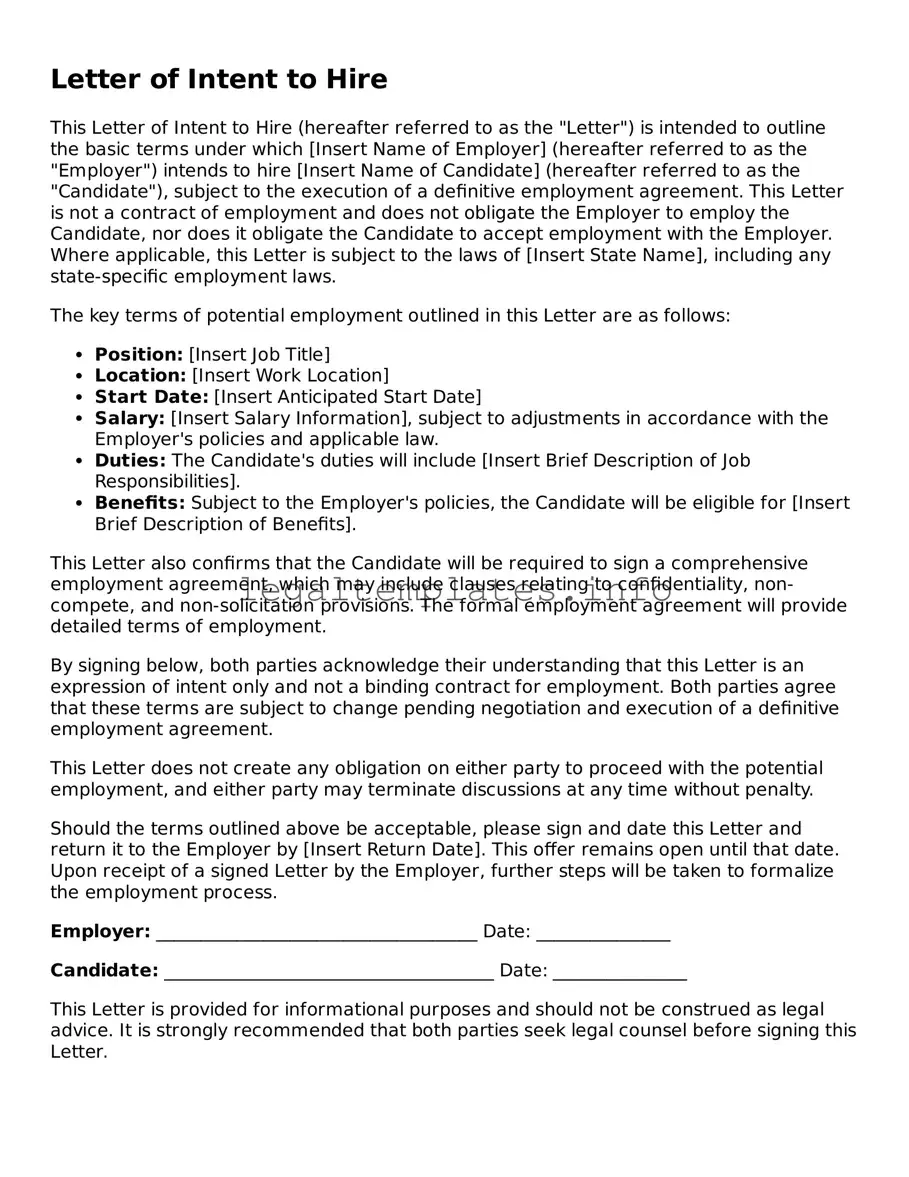What is a Letter of Intent to Hire?
A Letter of Intent to Hire is a document that employers use to confirm their intention to employ a candidate. It outlines the basic terms of the employment offer, including the position, start date, wage/salary, and any other conditions or requirements. Although it shows a commitment to hire, it is not legally binding in the way a formal employment contract is.
When should an employer use a Letter of Intent to Hire?
An employer should use a Letter of Intent to Hire after a successful interview process when they have decided on a candidate they wish to hire. It is used to inform the candidate of their selection and to provide details of the employment offer before the formal employment contract is prepared and signed.
Is a Letter of Intent to Hire legally binding?
No, a Letter of Intent to Hire is not typically legally binding concerning the employment offer itself. However, it might contain provisions that could be legally binding, like confidentiality agreements or non-disclosure agreements. It is crucial for both parties to carefully review the terms outlined in the letter.
What should be included in a Letter of Intent to Hire?
A comprehensive Letter of Intent to Hire should include the job title, start date, salary or wage, work schedule, and any conditions that must be met before employment begins (such as background checks or drug tests). It can also cover details on benefits, confidentiality obligations, or any probationary period.
Can a candidate negotiate the terms outlined in a Letter of Intent to Hire?
Yes, a candidate can negotiate the terms outlined in a Letter of Intent to Hire. Since it is a preliminary step before drafting the formal employment agreement, it serves as an ideal point for discussing terms, responsibilities, salary, and other conditions of employment. Both parties should come to an agreement before the formal contract is drafted.
What happens after a Letter of Intent to Hire is sent?
After a Letter of Intent to Hire is sent, the candidate typically reviews the terms, and possibly, negotiations will take place. Once there is an agreement on the terms, the formal employment process continues, leading to the drafting, reviewing, and signing of an official employment agreement or contract.
Can an employer withdraw a Letter of Intent to Hire?
Yes, an employer can withdraw a Letter of Intent to Hire, as it is not a legally binding contract of employment. However, withdrawing an offer should be done with consideration to fairness and professionalism, and ideally, communicated clearly and promptly to avoid any misunderstandings. It's worth noting that withdrawing an offer after a candidate has relied on it to their detriment may have legal implications.
